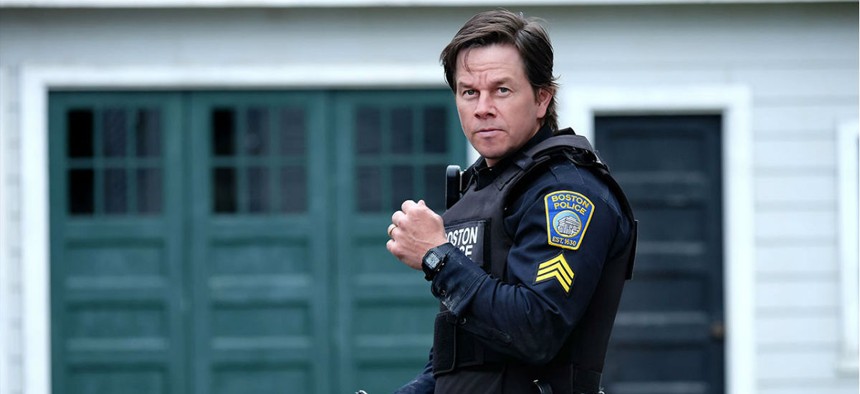‘Patriots Day’ Shines a Spotlight on Federal-State-Local Law Enforcement Radio Woes
The Boston Marathon bombing response is revisited in a new movie.
Beginning on Friday, theaters across the country will return willing viewers to the trauma of the 2013 Boston Marathon bombing via the new movie thriller “Patriots Day.”
The cast of notables includes Kevin Bacon (as FBI agent in charge Richard DesLauriers), John Goodman (as Boston Police Commissioner Ed Davis) and Mark Wahlberg (as a composite of real characters in Boston police Sgt. Tommy Saunders). They recreate the tick-tock of the four-day hunt for the domestic terrorists whose pressure-cooker bombs caused three deaths and injured more than 200.
Co-written and directed by Peter Berg, the movie effectively draws in the audience by introducing all the key players—victims, law enforcement professionals, politicians and tipsters—first in intimate situations in their homes with loved ones. Gradually the role each played in the whole-of-community response is made clear.
Among the many tense and poignant clashes the movie recreates are the inevitable tensions between differing law enforcement agencies—particularly as the all-powerful FBI bigfoots its way in to the manhunt. The Massachusetts governor, Boston mayor and police commissioner are at first reluctant to declare the crime an act of terrorism, which means the FBI comes in to set up the unified command center and floods the zone with hazmat specialists, computer analysts and a hostage rescue team.
“This is my city,” the commissioner anguishes.
They disagree over whether releasing photos of the still-unidentified bombers would generate useful leads or serve as an embarrassing confession of how little authorities know.
A specially trained FBI interrogator—who confronts the wife of bomber Tamerlan Tsarnaev wearing a head scarf and discussing Islamic theology—spurns the dossier the local police offer her, presumably because she has superior national-level intelligence.
A police officer lined up with other government snipers on a roof in Watertown, Mass., after bomber Dzhokhar Tsarnaev has been located hiding in a boat stored at a residence, declines the FBI sniper’s instructions that she leave the dangerous task to them. “I’m from Framingham, Mass., and I’m not leaving,” she says.
In the chaos following the murder of Massachusetts Institute of Technology campus police officer Sean Collier, the Boston and Watertown police departments struggle to communicate with incompatible radios.
Such clashes were studied in both the federal and state post-mortems on the crime. The Massachusetts government’s after-action report said, “Key leaders had the necessary trust and rapport that allowed for the Unified Command to make effective, collaborative decisions, execute mission-tasking, maintain situational awareness, and coordinate public messaging.” But it recommended that “radio equipment gaps in interoperability” be addressed.
The federal after-action report prepared by four inspectors general in 2014 said the multiple agency-effort was for the most part well executed.
The unclassified, redacted version of a 168-page report highlighted a few instances in which the CIA and the FBI, for example, “did not coordinate” as called for in a memorandum of understanding in the two years preceding the April 15, 2013, attack, in processing leads about killer Tamerlan Tsarnaev, who ultimately died following a firefight with police. But none of the missed opportunities, the report concluded, would likely have headed off the terrorist plan.
NEXT STORY: Should DHS Move to Des Moines?








